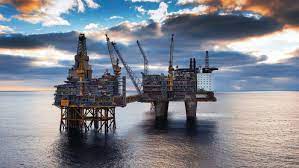The continuous shift in oil trade flows following the EU embargo on Russian exports is a huge win for the crude from Western Europe’s largest oilfield offshore Norway.
Norway’s Johan Sverdrup crude is now a top choice for European refineries that used to rely on Russia’s flagship grade, Urals, before the Russian invasion of Ukraine.
The Johan Sverdrup crude from the same-name field, which came online in 2019, is similar in quality to Russia’s Urals and has been increasingly flowing to European customers over the past year at the expense of Asian destinations. Urals, for its part, is now flowing east to Asia and no longer to Europe after the EU embargo on imports of Russian oil, according to traders and tanker-tracking data cited by Reuters.
So far this year, only 2 million barrels of Johan Sverdrup crude have made their way to Asia, compared to 100 million barrels in 2021, the year before the Russian invasion of Ukraine in February 2022, per Refinitiv Eikon reported in the Reuters analysis.
Urals, on the other hand, is selling in India and China and reportedly above the $60 price cap in recent weeks. India is estimated to account for over 70% of the Urals shipments in April, and China is receiving 20% of those shipments so far this month, according to Reuters estimates.
China and India haven’t joined the so-called Price Cap Coalition of mostly Western nations that imposed a price cap on Russia’s crude oil if the cargoes are using Western insurance, shipping, and financing.
Since the OPEC+ announcement of additional cuts through the end of this year, the price of Urals has moved higher, threatening the price cap imposed in a bid to hurt Russia’s oil revenues.
The Johan Sverdrup and Urals grades, similar in content and gravity, have now switched their previously top destinations, highlighting the major shift in global crude oil flows since the West imposed sanctions on Russia’s oil.
Johan Sverdrup has medium density and medium sulfur content, lower than the sulfur content of Urals, which is also a medium sour crude. Both grades have high diesel yields.
Johan Sverdrup flows to Asia have fallen off a cliff, but hit a record high to Poland, according to Refinitiv Eikon data. Poland stopped importing Russian crude via pipeline in February this year. In the following month of March, imports of the Johan Sverdrup crude at the Polish port of Gdansk soared to a record-high of more than 8 million barrels, the data showed.
Johan Sverdrup also accounted for at least 50% of Finland’s crude oil imports and is also heading to Lithuania, according to Refinitiv Eikon.
With the major trade shift, most voyages of Johan Sverdrup cargoes are now much shorter than the time spent on shipments to Asia, while Russia pays for longer trips of Urals from its Baltic Sea ports to India and China.
Johan Sverdrup is estimated to be able to meet up to 7% of European oil demand, the operator of the oilfield, Equinor, says.
The Johan Sverdrup oilfield, Western Europe’s biggest oilfield, which came online in 2019, produced 535,000 barrels per day (bpd) of crude oil, and with Johan Sverdrup phase 2 started up at the end of last year, the giant oilfield is now pumping around 720,000 bpd.
Johan Sverdrup alone can meet 6-7% of the daily oil demand in Europe. Recoverable volumes in the Johan Sverdrup field total 2.7 billion barrels of oil equivalent, Equinor says.
“Johan Sverdrup accounts for large and important energy deliveries, and in the current market situation, most of the volumes will go to Europe,” Geir Tungesvik, Equinor’s executive vice president for Projects, Drilling & Procurement, said in December 2022.

 Iran Energy News Oil, Gas, Petrochemical and Energy Field Specialized Channel
Iran Energy News Oil, Gas, Petrochemical and Energy Field Specialized Channel



